
Tokyo: A Fusion of Tradition and Futurism
Discover Tokyo, where ancient traditions meet futuristic innovation. Explore serene temples, bustling markets, and vibrant neighborhoods in Japan's dynamic capital.
Tokyo, the bustling capital of Japan, is a city that seamlessly blends the old with the new. From ancient temples and serene gardens to neon-lit skyscrapers and cutting-edge technology, Tokyo offers an endless array of experiences for every type of traveler. As you stroll through its streets, you'll find traditional tea houses sitting comfortably alongside ultra-modern shopping centers, showcasing the city's ability to honor its past while embracing the future. One of Tokyo's most iconic spots is the historic district of Asakusa, where you can visit the impressive Senso-ji Temple, the city's oldest and most significant Buddhist temple. Nearby, the Nakamise Shopping Street offers a variety of traditional snacks and souvenirs, providing a taste of old Tokyo. In contrast, the Shibuya Crossing, often referred to as the world's busiest pedestrian crossing, epitomizes the high-energy pace of modern Tokyo. For a touch of nature amidst the urban sprawl, a visit to the Meiji Shrine and its surrounding forest is a must. This peaceful oasis offers a respite from the city's hustle and bustle and is a popular spot for traditional Shinto weddings. On the other hand, technology enthusiasts will revel in Akihabara, Tokyo's electric town, brimming with electronic shops, anime stores, and gaming arcades. Tokyo is also a culinary paradise, with a dining scene that ranges from Michelin-starred restaurants to humble ramen shops. Tsukiji Outer Market offers fresh seafood and street food, while Omoide Yokocho in Shinjuku provides an authentic experience of Japanese izakayas (pubs). Whether you're savoring sushi, exploring historical sites, or marveling at the neon skyline, Tokyo promises a dynamic and unforgettable journey.
Local tips in Tokyo
- Purchase a Suica or Pasmo card for convenient travel on Tokyo's extensive public transportation system.
- Visit popular attractions like Shibuya Crossing and Asakusa Temple early in the morning to avoid large crowds.
- Learn a few basic Japanese phrases; locals appreciate the effort and it can enhance your travel experience.
- Take advantage of the tax-free shopping available for tourists at many stores; bring your passport for verification.
- Try to experience a traditional tea ceremony or a sumo wrestling match for a taste of Japanese culture.
Neighbourhoods in Tokyo
Tokyo: A Fusion of Tradition and Futurism
Tokyo, the bustling capital of Japan, is a city that seamlessly blends the old with the new. From ancient temples and serene gardens to neon-lit skyscrapers and cutting-edge technology, Tokyo offers an endless array of experiences for every type of traveler. As you stroll through its streets, you'll find traditional tea houses sitting comfortably alongside ultra-modern shopping centers, showcasing the city's ability to honor its past while embracing the future. One of Tokyo's most iconic spots is the historic district of Asakusa, where you can visit the impressive Senso-ji Temple, the city's oldest and most significant Buddhist temple. Nearby, the Nakamise Shopping Street offers a variety of traditional snacks and souvenirs, providing a taste of old Tokyo. In contrast, the Shibuya Crossing, often referred to as the world's busiest pedestrian crossing, epitomizes the high-energy pace of modern Tokyo. For a touch of nature amidst the urban sprawl, a visit to the Meiji Shrine and its surrounding forest is a must. This peaceful oasis offers a respite from the city's hustle and bustle and is a popular spot for traditional Shinto weddings. On the other hand, technology enthusiasts will revel in Akihabara, Tokyo's electric town, brimming with electronic shops, anime stores, and gaming arcades. Tokyo is also a culinary paradise, with a dining scene that ranges from Michelin-starred restaurants to humble ramen shops. Tsukiji Outer Market offers fresh seafood and street food, while Omoide Yokocho in Shinjuku provides an authentic experience of Japanese izakayas (pubs). Whether you're savoring sushi, exploring historical sites, or marveling at the neon skyline, Tokyo promises a dynamic and unforgettable journey.
When is the best time to go to Tokyo?
Iconic landmarks you can’t miss
Tokyo Skytree
Experience breathtaking views of Tokyo and beyond from the iconic Tokyo Skytree, a marvel of modern architecture and culture.

Sensō-ji
Discover the spiritual heart of Tokyo at Sensō-ji, an iconic Buddhist temple that blends history, culture, and vibrant traditions in the Asakusa district.

Tokyo Tower
Discover breathtaking views and cultural experiences at Tokyo Tower, a symbol of Japan's innovation and beauty in the heart of Tokyo.

Shinjuku Gyoen National Garden
Discover the serene beauty of Shinjuku Gyoen National Garden, a peaceful retreat featuring stunning landscapes and seasonal blooms in the heart of Tokyo.
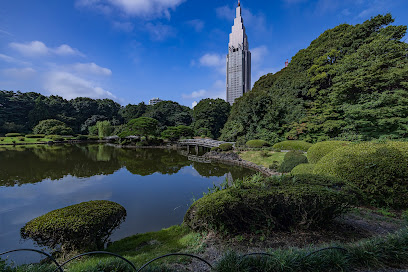
Meiji Jingu
Discover the tranquility of Meiji Jingu, Tokyo's majestic Shinto shrine surrounded by lush forests and rich cultural heritage.

Kaminarimon
Experience the awe of Kaminarimon, the iconic gateway to Senso-ji Temple, where history and spirituality meet in vibrant Tokyo.

The Life-Sized UNICORN GUNDAM Statue
Discover the iconic Life-Sized UNICORN GUNDAM Statue in Tokyo, a breathtaking fusion of art and technology that stands as a testament to Japanese pop culture.

Hachikō Memorial Statue
Visit the iconic Hachikō Memorial Statue in Shibuya, Tokyo – a touching tribute to loyalty and love that captures the heart of every visitor.

Kasai Rinkai Park
Explore the tranquil beauty of Kasai Rinkai Park in Tokyo, a perfect destination for nature lovers and families seeking outdoor adventures.

Yushima Shrine
Experience the serene beauty and cultural heritage of Yushima Shrine, Tokyo's enchanting Shinto shrine dedicated to education and learning.

The East Gardens of the Imperial Palace
Experience the tranquility and historical richness of The East Gardens of the Imperial Palace, a serene retreat in the heart of Tokyo's bustling landscape.

Shibuya Scramble Crossing
Immerse yourself in the vibrant heartbeat of Tokyo at Shibuya Scramble Crossing, a landmark of modern urban life and culture.

Tokyo Metropolitan Government Building North Observatory
Discover stunning panoramic views of Tokyo from the Tokyo Metropolitan Government Building North Observatory, a must-visit tourist attraction.

Tokyo Metropolitan Government Building
Experience breathtaking views and modern architecture at the Tokyo Metropolitan Government Building, a must-visit landmark in the heart of Shinjuku.

Rainbow Bridge
Experience the beauty of Tokyo with a visit to the Rainbow Bridge, a stunning architectural marvel boasting breathtaking views of the city and bay.

Unmissable attractions to see
Tokyo Disneyland
Experience the magic of Tokyo Disneyland, a captivating theme park in Chiba filled with thrilling rides, dazzling shows, and beloved Disney characters.

Tokyo DisneySea
Experience the magic of Tokyo DisneySea, where adventure and imagination meet in a stunning, immersive theme park unlike any other.
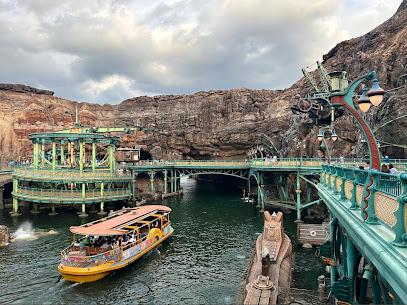
Tokyo Skytree
Experience breathtaking views from Tokyo Skytree, the tallest tower in Japan, and a symbol of modern architecture in the heart of Tokyo.

Tokyo Tower
Experience breathtaking views and cultural richness at Tokyo Tower, an iconic landmark blending tradition and modernity in the heart of Tokyo.

Sensō-ji
Explore the serene beauty and rich history of Sensō-ji, Tokyo's oldest Buddhist temple, a cultural gem in the heart of Asakusa.

Meiji Jingu
Explore the serene beauty of Meiji Jingu Shrine in Tokyo, a tranquil escape that embodies Japan's spiritual heritage amidst vibrant city life.

Yokohama Chinatown
Experience the vibrant culture and delicious cuisine of Yokohama Chinatown, the largest Chinatown in the world, in the heart of Japan.

Shinjuku Gyoen National Garden
Explore the lush beauty of Shinjuku Gyoen National Garden, Tokyo's serene retreat featuring stunning landscapes and seasonal blooms.

teamLab Planets
Explore the stunning digital art world of teamLab Planets in Tokyo, where art, nature, and technology blend in a mesmerizing immersive experience.
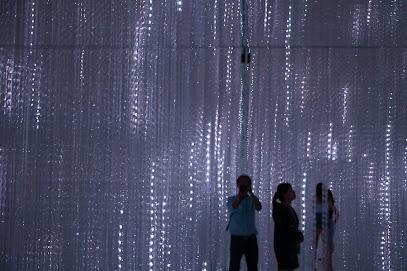
Roppongi Hills
Experience the perfect blend of art, shopping, and breathtaking views at Roppongi Hills, Tokyo's premier urban destination.
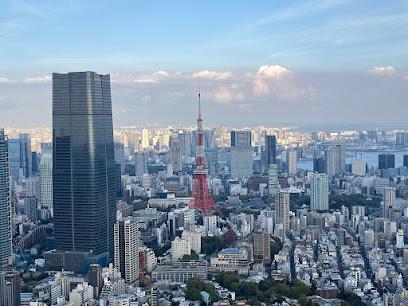
Ueno Zoological Gardens
Discover the enchanting Ueno Zoological Gardens in Tokyo, home to over 3,000 animals and a commitment to wildlife conservation.

Kaminarimon
Explore the iconic Kaminarimon, a breathtaking gateway to Senso-ji Temple, rich in culture and history within Tokyo's vibrant Asakusa district.

Tokyo Big Sight
Explore Tokyo Big Sight, Japan's premier convention center, where innovation meets culture in a stunning architectural marvel.

Ueno Park
Discover the beauty and culture of Ueno Park, a green gem in Tokyo, featuring museums, a zoo, and stunning cherry blossoms in spring.

Sunshine City
Discover the dynamic world of Sunshine City, Tokyo's ultimate destination for shopping, entertainment, and cultural experiences in the heart of Toshima City.

Essential places to dine
Gonpachi Nishi-Azabu
Experience authentic Japanese cuisine at Gonpachi Nishi-Azabu in Tokyo - where tradition meets taste in every dish.

Toufuya Ukai
Discover the essence of traditional Japanese dining at Toufuya Ukai, specializing in exquisite kaiseki meals featuring handcrafted tofu delicacies.

Hard Rock Cafe Tokyo Roppongi
Experience American cuisine amidst iconic rock 'n' roll memorabilia at Hard Rock Cafe Tokyo Roppongi.

釣船茶屋 ざうお 新宿店/Fishing Restaurant Zauo Shinjuku
Discover a unique dining experience at Fishing Restaurant Zauo Shinjuku where you can catch your own seafood in a lively izakaya setting.

Kaikaya by the Sea
Discover Kaikaya by the Sea in Shibuya: A seafood lover's paradise offering fresh dishes with unique flavors amidst Tokyo's vibrant dining scene.
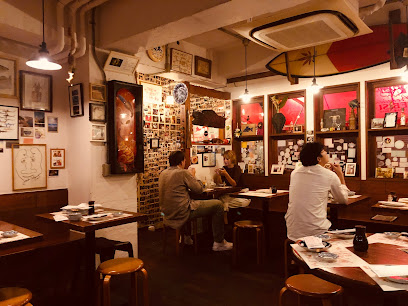
Downtown B's Indian Kitchen, Tokyo
Experience the best of authentic Indian cuisine at Downtown B's Indian Kitchen in Tokyo's vibrant Roppongi district.

Wagyu to Worldwide
Experience the fusion of American comfort food and Japanese culinary artistry at Wagyu to Worldwide in Tokyo's vibrant Chuo City.

Burger Revolution Tokyo Wine & Bar 六本木店
Experience gourmet burgers and fine wines at Burger Revolution Tokyo Wine & Bar in Roppongi - where American flavors meet Japanese hospitality.
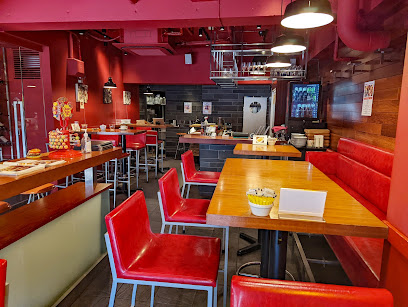
Jomon Roppongi
Experience authentic Kushiyaki dining at Jomon Roppongi in Tokyo – where flavor meets tradition in a vibrant izakaya setting.
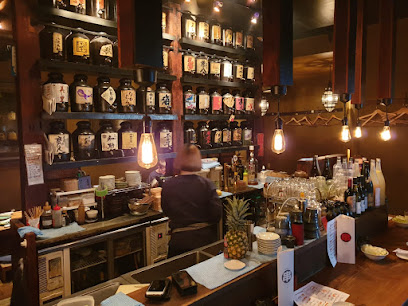
Ninja Tokyo
Experience exquisite fusion cuisine in an immersive ninja-themed environment at Ninja Tokyo - where every meal is an adventure!

Soul Food House
Experience authentic Cajun and soul food at Soul Food House in Tokyo - where Southern comfort meets urban dining.

NOBU Tokyo
Experience the fusion of tradition and innovation at NOBU Tokyo, where exquisite Japanese cuisine meets modern elegance.

Ta-im (Ebisu Shop)
Discover authentic Israeli flavors at Ta-im (Ebisu Shop), a cozy culinary haven in Tokyo's vibrant Ebisu district.

Omotesando Ukai Tei
Discover the exquisite flavors of Teppanyaki at Ukai Tei in Omotesando – where culinary artistry meets elegance.
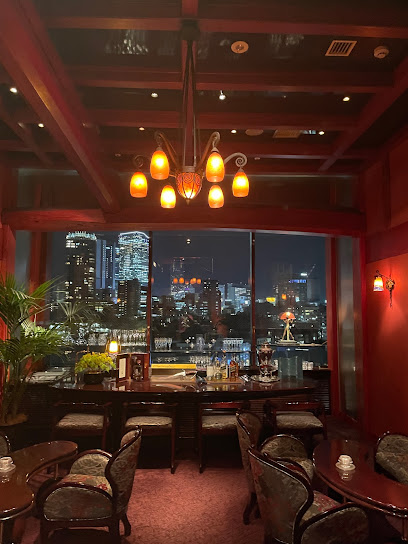
Quintessence
Discover Quintessence in Tokyo: A fine dining gem serving exquisite French haute cuisine that promises an unforgettable culinary journey.

Markets, malls and hidden boutiques
DiverCity Tokyo Plaza
Discover DiverCity Tokyo Plaza, a unique shopping and entertainment destination featuring iconic attractions like the life-sized Gundam statue and diverse dining options.

Takashimaya
Discover shopping bliss at Takashimaya in Shibuya City, Tokyo—home to an array of gift shops, gourmet foods, and delightful cafes.

First Avenue Tokyo Station
Experience the heart of Tokyo at First Avenue Tokyo Station, a shopping and dining paradise beneath the iconic station.

Tokyo Character Street
Discover the magic of Japanese pop culture at Tokyo Character Street – a vibrant shopping haven for anime and manga fans.

AKIHABARA KOTOBUKIYA
Discover an extraordinary selection of anime figures and collectibles at Akihabara Kotobukiya, a paradise for pop culture enthusiasts in Tokyo.
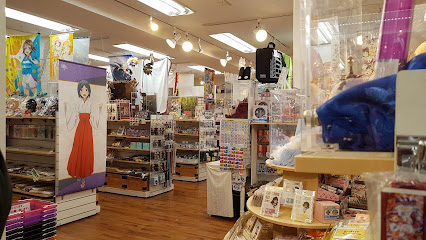
Oriental Bazaar
Explore the rich culture of Japan at Oriental Bazaar, where unique souvenirs, antiques, and fashion await in the heart of Shibuya.

Disney Flagship Store Tokyo
Experience the enchantment of Disney at the flagship store in Tokyo, offering exclusive merchandise and magical memories for every visitor.
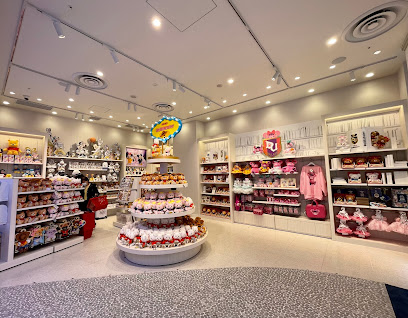
HANDS Tokyo Store
Explore HANDS Tokyo Store, a vibrant gift shop featuring unique souvenirs, DIY supplies, and a variety of home and stationery products in the heart of Tokyo.

Tokyo National Museum Museum Shop
Discover unique souvenirs and home goods inspired by Japanese culture at the Tokyo National Museum Museum Shop.

MESH tokyo
Discover the enchanting world of toys at MESH Tokyo, a vibrant store in Shibuya that captivates children and adults alike.
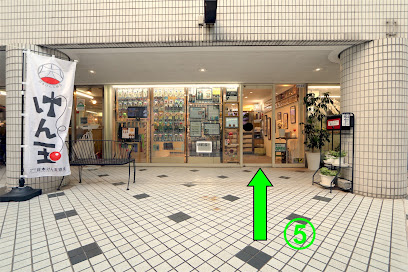
Atlantis Vintage Tokyo
Explore the eclectic charm of Atlantis Vintage Tokyo, a second-hand store brimming with retro treasures and unique collectibles in Suginami City.

NUBIAN HARAJUKU
Discover unique fashion at Nubian Harajuku, the ultimate clothing store experience in Tokyo's vibrant Harajuku district.

THE COVER NIPPON
Explore THE COVER NIPPON in Tokyo for unique gifts and handcrafted souvenirs that embody the essence of Japanese culture.
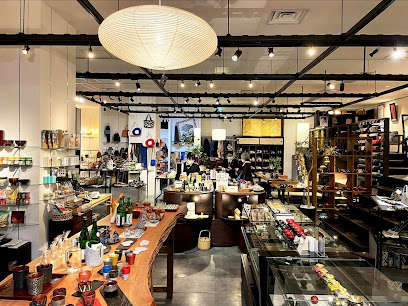
PLAZA Tokyo Store
Explore the vibrant PLAZA Tokyo Store in Marunouchi for unique Japanese lifestyle products and unforgettable souvenirs.

Good Design Store TOKYO by NOHARA
Explore the essence of Japanese design at Good Design Store TOKYO by NOHARA, where unique gifts and home goods await.
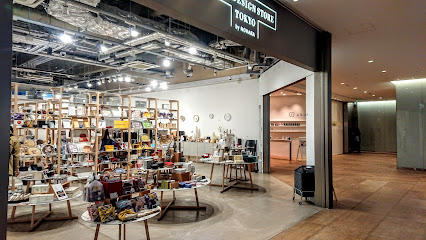
Essential bars & hidden hideouts
The SG Club
Experience the vibrant nightlife of Shibuya at The SG Club, Tokyo's premier cocktail bar known for its innovative drinks and lively atmosphere.

Bar Benfiddich
Discover the artistry of cocktails at Bar Benfiddich, a premier bar in Shinjuku, Tokyo, known for its unique and innovative beverage creations.

Bar TRENCH
Experience the artistic cocktails and vibrant nightlife at Bar TRENCH, a must-visit cocktail bar in Tokyo's Shibuya district.

High Five
Discover High Five, a cocktail bar in Tokyo's Ginza district, where innovative drinks and personalized service create an unforgettable nightlife experience.

Tír na nÓg
Experience the charm of Tír na nÓg, a Celtic-inspired bar and café in Ginza, Tokyo, offering a unique blend of drinks, food, and ambiance.

Deathmatch in Hell
Discover the quirky charm of Deathmatch in Hell, an iconic bar in Shinjuku's Kabukicho district, offering a unique nightlife experience.

Art Bar Shuten-Doji
Experience the vibrant nightlife at Art Bar Shuten-Doji, where art meets karaoke in the heart of Tokyo's Kabukicho district.

THESE
Discover THESE Bar in Nishiazabu, Tokyo, where vibrant ambiance meets expertly crafted cocktails for an unforgettable nightlife experience.

Mandarin Bar
Experience elegance and stunning views at the Mandarin Bar, Tokyo's premier destination for exquisite cocktails and fine dining.

Geronimo Shot Bar
Dive into Tokyo's nightlife at Geronimo Shot Bar, where creative shots and vibrant atmosphere create unforgettable memories.

Zoetrope
Immerse yourself in the vibrant nightlife at Zoetrope, a must-visit bar in Shinjuku, Tokyo, known for its creative cocktails and inviting atmosphere.
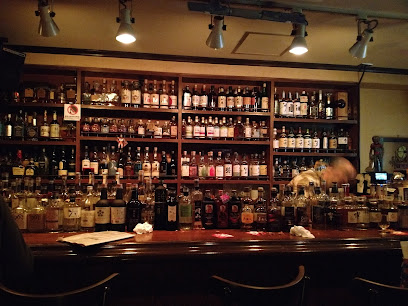
Bar 石の華 Ishinohana
Discover the exquisite cocktails and sophisticated atmosphere of Bar 石の華 Ishinohana in the heart of Shibuya, Tokyo.
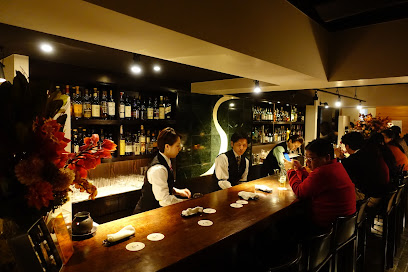
Gen Yamamoto
Discover Gen Yamamoto, where seasonal ingredients meet artistry in cocktail crafting in the heart of Tokyo's Azabujuban.

BAR PSY
Discover the vibrant nightlife of Tokyo at BAR PSY, a cozy bar in Kabukicho, Shinjuku, offering a range of drinks and a lively atmosphere.

ARAKU
Discover Araku, a hidden gem in Shinjuku's Golden Gai, where exceptional cocktails and a warm atmosphere await every visitor.

Local Phrases
-
- Helloこんにちは
[Kon'nichiwa] - Goodbyeさようなら
[Sayōnara] - Yesはい
[Hai] - Noいいえ
[Iie] - Please/You're welcomeどうぞ
[Dōzo] - Thank youありがとう
[Arigatō] - Excuse me/Sorryすみません
[Sumimasen] - How are you?お元気ですか?
[O-genki desu ka?] - Fine. And you?元気です。あなたは?
[Genki desu. Anata wa?] - Do you speak English?英語話せますか?
[Eigo hanasemasu ka?] - I don't understandわかりません
[Wakarimasen]
- Helloこんにちは
-
- I'd like to see the menu, pleaseメニューを見せてください
[Menyū o misete kudasai] - I don't eat meat肉を食べません
[Niku o tabemasen] - Cheers!乾杯!
[Kanpai!] - I would like to pay, pleaseお会計をお願いします
[O-kaikei o onegai shimasu]
- I'd like to see the menu, pleaseメニューを見せてください
-
- Help!助けて!
[Tasukete!] - Go away!行ってください!
[Itte kudasai!] - Call the Police!警察を呼んで!
[Keisatsu o yonde!] - Call a doctor!医者を呼んで!
[Isha o yonde!] - I'm lost道に迷いました
[Michi ni mayoimashita] - I'm ill具合が悪いです
[Guai ga warui desu]
- Help!助けて!
-
- I'd like to buy...買いたいです...
[Kaitai desu...] - I'm just looking見ているだけです
[Mite iru dake desu] - How much is it?いくらですか?
[Ikura desu ka?] - That's too expensiveそれは高すぎます
[Sore wa takasugimasu] - Can you lower the price?値段を下げてもらえますか?
[Nedan o sagete moraemasu ka?]
- I'd like to buy...買いたいです...
-
- What time is it?今何時ですか?
[Ima nanji desu ka?] - It's one o'clock1時です
[Ichi-ji desu] - Half past (10)(10時) 半過ぎ
[(Jū-ji) han sugi] - Morning朝
[Asa] - Afternoon午後
[Gogo] - Evening夕方
[Yūgata] - Yesterday昨日
[Kinō] - Today今日
[Kyō] - Tomorrow明日
[Ashita] - 11
[Ichi] - 22
[Ni] - 33
[San] - 44
[Yon] - 55
[Go] - 66
[Roku] - 77
[Shichi] - 88
[Hachi] - 99
[Ku] - 1010
[Jū]
- What time is it?今何時ですか?
-
- Where's a/the...?…はどこですか?
[...wa doko desu ka?] - What's the address?住所は何ですか?
[Jūsho wa nan desu ka?] - Can you show me (on the map)?地図で示してもらえますか?
[Chizu de shimeshite moraemasu ka?] - When's the next (bus)?次の(バス)はいつですか?
[Tsugi no (basu) wa itsu desu ka?] - A ticket (to ....)(...) までの切符をください
[(...) made no kippu o kudasai]
- Where's a/the...?…はどこですか?
History of Tokyo
-
Tokyo, originally known as Edo, was a small fishing village until the early 17th century. In 1603, Tokugawa Ieyasu established the Tokugawa Shogunate and made Edo its administrative center. This period marked the beginning of Tokyo's transformation into a major city. The Edo Period lasted until 1868 and was characterized by economic growth, strict social order, isolationist foreign policies, and a rich cultural heritage.
-
In 1868, the Meiji Restoration marked a significant turning point in Japanese history. The Tokugawa Shogunate was overthrown, and the emperor's power was restored. The capital was moved from Kyoto to Edo, which was renamed Tokyo, meaning 'Eastern Capital.' This era ushered in rapid modernization and Westernization, transforming Tokyo into a bustling metropolis.
-
On September 1, 1923, Tokyo was devastated by the Great Kanto Earthquake, which resulted in extensive destruction and loss of life. The earthquake and subsequent fires destroyed much of the city, including 370,000 homes, and left over 140,000 people dead or missing. The disaster prompted a massive reconstruction effort, which laid the groundwork for modern urban planning in Tokyo.
-
During World War II, Tokyo suffered extensive damage from Allied bombings. The most devastating attack occurred on March 10, 1945, when Operation Meetinghouse resulted in the firebombing of Tokyo, killing over 100,000 people and destroying large parts of the city. The post-war period saw Tokyo undergo significant rebuilding and economic recovery, leading to its emergence as a major global city.
-
In the decades following World War II, Tokyo experienced rapid economic growth and urban development. The 1964 Summer Olympics symbolized Japan's recovery and reintegration into the international community. During this period, Tokyo became the center of Japan's economic miracle, with significant advancements in technology, infrastructure, and industry.
-
On March 20, 1995, Tokyo was the site of a terrorist attack when members of the Aum Shinrikyo cult released sarin gas in the subway system. The attack killed 13 people and injured over 1,000 others. This event was one of the deadliest terrorist attacks in Japan and had a profound impact on national security policies and public consciousness.
-
Today, Tokyo is a vibrant and diverse city, known for its blend of traditional and contemporary culture. It is one of the world's leading financial centers and a hub for technology, fashion, and cuisine. Tokyo continues to evolve, balancing its rich historical heritage with cutting-edge innovation and development.
Tokyo Essentials
-
Tokyo is served by two major international airports: Narita International Airport (NRT) and Haneda Airport (HND). Narita is located approximately 60 kilometers east of central Tokyo, while Haneda is much closer, about 14 kilometers south of Tokyo Station. Both airports offer a variety of transportation options to get into the city, including trains, buses, and taxis. The Narita Express train and the Keisei Skyliner are popular options for getting from Narita to central Tokyo, while the Tokyo Monorail and Keikyu Line are convenient choices from Haneda.
-
Tokyo boasts an extensive and efficient public transportation system, including trains, subways, and buses. The Japan Rail (JR) lines, Tokyo Metro, and Toei Subway lines are the primary means for getting around. Visitors can purchase a Suica or Pasmo card, which are rechargeable smart cards that can be used on most public transport. Taxis are also widely available but can be expensive. For a unique experience, consider taking a water bus along the Sumida River.
-
The official currency in Japan is the Japanese Yen (JPY). Credit and debit cards are widely accepted in hotels, department stores, and major restaurants, but it's advisable to carry some cash, especially when visiting smaller establishments. ATMs are plentiful, with many 7-Eleven convenience stores offering international ATM services. Currency exchange services are available at airports, banks, and currency exchange counters in major areas.
-
Tokyo is considered one of the safest cities in the world, but tourists should still exercise common sense. Areas like Kabukicho in Shinjuku and Roppongi have a higher concentration of nightclubs and bars, which can sometimes attract scams targeting tourists. It's advisable to stay vigilant, avoid accepting drinks from strangers, and not walk alone in unfamiliar areas after dark. Petty crime like pickpocketing is rare but can occur in crowded places.
-
In case of emergency, dial 110 for police and 119 for fire and medical assistance. Many police officers and emergency responders speak basic English. It's a good idea to have travel insurance that covers medical emergencies. Major hospitals in Tokyo have English-speaking staff, and there are many pharmacies where you can purchase over-the-counter medications. Additionally, embassies and consulates can provide assistance if needed.
-
Fashion: Do dress neatly and conservatively. Avoid overly casual or revealing clothing when visiting religious sites. Religion: Do be respectful at temples and shrines. Always bow and follow local customs, such as washing your hands and mouth before entering a shrine. Public Transport: Do be quiet and considerate on public transport. Don't talk loudly or use your phone. Greetings: Do bow slightly when greeting someone. A handshake is also acceptable in business settings. Eating & Drinking: Do try local foods and be adventurous. Don't tip, as it is not customary in Japan and can be considered rude.
-
To experience Tokyo like a local, visit neighborhood izakayas (Japanese pubs) and try their local dishes. Explore hidden gems like Yanaka Ginza for a nostalgic shopping street experience. Participate in seasonal festivals and events, such as cherry blossom viewing (hanami) in spring and fireworks (hanabi) in summer. Use a bicycle to explore quieter neighborhoods and enjoy the city's many parks and gardens. Engaging with locals can enhance your experience, as many are willing to share their knowledge and recommendations.
Trending Landmark in Tokyo
-
Tokyo Skytree
-
Sensō-ji
-
Tokyo Tower
-
Shinjuku Gyoen National Garden
-
Meiji Jingu
-
Kaminarimon
-
The Life-Sized UNICORN GUNDAM Statue
-
Hachikō Memorial Statue
-
Kasai Rinkai Park
-
Yushima Shrine
-
The East Gardens of the Imperial Palace
-
Shibuya Scramble Crossing
-
Tokyo Metropolitan Government Building North Observatory
-
Tokyo Metropolitan Government Building
-
Rainbow Bridge
Nearby Cities to Tokyo
-
Things To Do in Nagoya
-
Things To Do in Kanazawa
-
Things To Do in Kyoto
-
Things To Do in Nara
-
Things To Do in Osaka
-
Things To Do in Hiroshima
-
Things To Do in Sapporo
-
Things To Do in Fukuoka
-
Things To Do in Pohang
-
Things To Do in Gyeongju
-
Things To Do in Ulsan
-
Things To Do in Busan
-
Things To Do in Andong
-
Things To Do in Daegu
-
Things To Do in Chuncheon






















